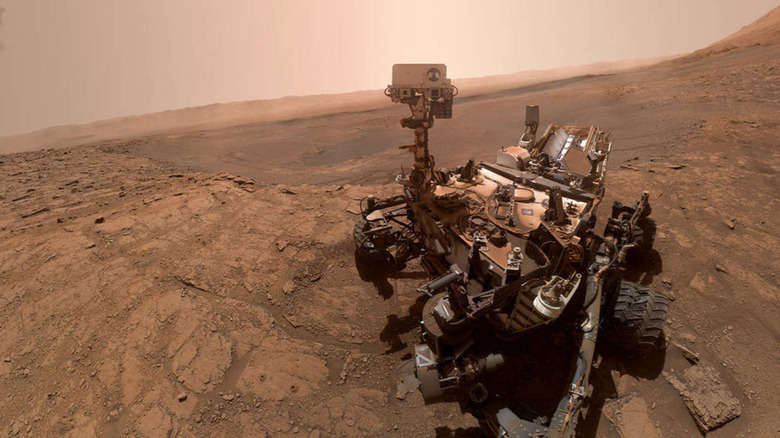These Rare Mars Clouds Tested Curiosity's Patience & NASA's Theories
A dramatic photo of clouds forming above a distinctively craggy Mars cliff-face has revealed an unexpected detail about the red planet, with the Curiosity rover helping answer a two year old mystery. The NASA Jet Propulsion Lab (JPL) which manages Curiosity – which has been on Mars since mid-2012 – first spotted the unusual cloud formation one Martian year ago, but its existence went against what was expected from our neighboring planet's weather.
That's because clouds on Mars in general are a rarity, given how thin the planet's atmosphere is, and the fact that its dryness leaves little moisture to form into visible clumps. When they do manage to form, meanwhile, they're typically low down over the planet: no higher than around 37 miles up, NASA says.
It meant that a formation spotted about two Earth years ago, much higher above the surface, bucked expectations about how Martian weather would form. The Curiosity team put the date on the calendar to make sure the rover was in the right spot to observe the early formation this time around, assuming the clouds did in fact reappear. Parked next to Mount Sharp, a 3.4 mile high rock formation in Gale Crater where Curiosity has undertaken its scientific research for nearly a decade, the rover watched the skies with its Mast Camera and other sensors.

Sure enough, the first signs of the wispy clouds began forming in late January, 2021. That alone was one outlier for Mars: they were far higher than the usual 37 mile limit. As a result, the Curiosity team believes they're in fact frozen carbon dioxide, rather than water.
"Scientists look for subtle clues to establish a cloud's altitude," NASA says, "and it will take more analysis to say for sure which of Curiosity's recent images show water-ice clouds and which show dry-ice ones."

Helping pin that differentiation down will be the color images that Mastcam can capture. While the black and white navigation cameras do a better job of showing the rippling textures of the clouds, Mastcam highlights their crystal shimmer as Mars moves in relation to the Sun. When the Sun is above the level of the clouds, the dry ice crystals glisten at their brightest; as it falls below that level, the crystals lose some of their gleam.
Identifying the presence of different gases – including water – on Mars, and the ways in which they are spread around the planet, has been a long-standing element of Curiosity's mission. The rover was originally intended to search for indications that microbial life could have once survived on Mars for two years; that was extended indefinitely in December 2012. However it's also there to try to better understand the extended timeline of the Martian atmosphere, and how that has evolved over the past four billion years.
